 Hop in and join us today to go to Qazvin Province, to the famous Alamut Fortress. If you are wondering, yeah, it is the same Alamut Castle in the movie, The Prince of Persia. Nothing much has left from this outstandingly famous castle, from ancient times. However, there is a lot to learn about it and marvel at.
Hop in and join us today to go to Qazvin Province, to the famous Alamut Fortress. If you are wondering, yeah, it is the same Alamut Castle in the movie, The Prince of Persia. Nothing much has left from this outstandingly famous castle, from ancient times. However, there is a lot to learn about it and marvel at.
But before we start let’s see Why should you Visit Alamut Castle?
- This Castle is one of the most important attractions of Qazvin province.
- It is one of the most significant historical castles in Iran.
- This fortress has played an important role in the history of the Ismailis and is world-famous.
- The fascinating nature around is refreshing and relaxing.
Let’s Get Going
What we know as Alamut Castle is actually the remains of a structure also known as Alamut Fortress and Hassan Castle. This 20,000-square-meter fort was the headquarters of Hassan Sabah. Sabah was the founder of the Ismaili government of Alamut. He opposed the Seljuks and their policies and fought against them. The fort gained a great reputation for its military-security activities of Hassan Sabah.
This castle is located in the Alamut region of Qazvin and northeast of Gazor Khan on a high hill. To visit this place, you have to drive for more than an hour on a winding road and walk about 400 steps. Alamut Fortress has been on Iran’s National Heritage List since February 3, 2002.
The History of Alamut Castle

Construction of Alamut Castle
In the year 861, Mutawakel Abbasi was the tenth caliph of the Abbasid era. During his time, Hassan Ibn Zayd Bagheri known as the “Al-Da‘ī al-kabīr” decided to build a castle. Some say he built the whole castle himself. But many historical documents indicate this castle had existed before and he completed it.
He was the one who founded the Alawite government of Tabarestan. And after the war against Taherians, he ruled over all the mountains and plains of Tabarestan. He also fought against the Abbasids and Saffarids. He had the support of the Deylamis like he always did.
As you delve into the fascinating history of Alamut Castle, you might also be interested in uncovering more about the rich heritage of Iran’s ancient architecture. Discover the timeless stories of Iran’s ancient walls and forts, and explore the narratives that these historical structures have silently witnessed over centuries.
Why Do They Call it Alamut?
The name of the castle consists of two parts: “Al” which comes from “Alah” or “Aloo” meaning eagle and “Amut” which means nest. According to the narrations, the kings of Deylaman found this place with the help of an eagle. Then he decided to build a full-fledged castle in this place and named it Eagle’s Nest (Alamut). Some consider “Amut” to be the word “learned” in the language of the Gilak and Deylami people and that Alamut means “learned from eagle“.
The Capture of the Castle by Hassan Sabah
We skip the one who built this castle and its adventures because the period of Alamut Castle’s prosperity began in the year 1090. Just when Hassan Sabah chose it as the center of the Ismailis. According to the narratives, Hassan Sabah spent 10 years in the mountainous regions of Azerbaijan, north, east, center, and west of Iran to find his base and finally reached Alamut. At the time, the Seljuk King had appointed a man, Mehdi Alavi, to command Alamut Castle. There are several historical stories about the capture of this castle by Hassan Sabah.
The Disguised Teacher
According to one story, he left his companions behind the gates of the castle and entered the castle under the guise of a teacher. He introduced himself as Dehkhoda, who came to teach the children. So the guards let him in. He began teaching and during his stay, he gradually took his companions into the castle. After a while, he revealed his identity and conquered the castle by paying 3,000 gold dinars.
The Skin and Fat Of The Cow
Another story says that he went behind the gates to capture the castle and heard from the ruler of the time, “You can not capture this castle because you do not own the smallest part of it”. To answer this, Sabah prepared a cow skin with its fats and covered the area around the castle with the same skin and fat, creating something like a line all around the castle. He then announced to the ruler that the castle now belonged to him. When the ruler asked him the reason, he replied:
Because the skin and fat of the cow was mine and I was able to cover the whole castle with it. So the whole castle is mine. And my way of argument was nothing but your own way of reasoning.
After these incidents, Hassan Sabah paid an amount equivalent to 1,000 or 3,000 gold dinars so that the ruler could let go of his castle. This place became the central base of the Nizari Ismaili State (Hashashin). And the whole region of Alamut came under the rule of the Ismailis until 1256. This state lasted until the last king of this dynasty, Rukn al-Din Khurshah. Unable to withstand the Mongol invasions, he surrendered the castle to their commander, Hulagu Khan.
Mongol Invasion
The Mongols continued their war and destruction and reached the fortress of Alamut. At that time, the seventh Ismaili ruler ruled the castle and his advisor was Nasir al-Din al-Tusi. The inhabitants of the castle hoped that the Mongols would die from the cold with the onset of winter. Unfortunately, that winter was not so cold. Khajeh Nasir asks the ruler to surrender and he does the same. Finally, in 1256, they set fire to the castle and destroyed everything.
During the Timurid period, the castle became a place of exile for political opponents. And after that, it did not have any glory until 1275. After some time, the Ismailis recaptured the fort and continued their work, but it did not last long. It was during the Safavid period that this building was emptied of Ismailis and after reconstructions, it was turned into a government prison. From 1524, the same time as the beginning of the reign of Shah Tahmasb Safavid until 1598, the structure of the castle was almost intact.
Mahmoud Afghan’s Invasion?
For unknown reasons, the fort was destroyed again, which some attribute to Mahmoud Afghan’s attack on Qazvin. But there is no evidence. During the Qajar period, the remains of the structure were destroyed and its bricks were used for other constructions. After that, to find treasures, many people excavated all over this place. And this destroyed what was remained of this glorious castle. And today only remnants of it remain. Archaeologists have long thought that this place was just a prison, but little by little, they found signs of the life of certain people and high-ranking officials. And made them realize what great days had seen this place, The Glorious Alamut Castle.
The Architecture of Alamut Castle 
What is left of Alamut Castle today is not very similar to a castle and is just a historical ruin. Here we briefly tell you about the architecture of the castle and its remnants:
The Location and Defensive Structure of the Castle, Ensuring Security
Alamut Castle is located on an impassable rocky height, at an altitude of 2163 meters above sea level and 200 meters above the surrounding grounds. There are precipices and steep slopes on all four sides of the fort, which made it difficult for the enemy to reach.
A large part of the castle tower and fortifications have been destroyed and only 3 towers north, south, and east are left. The eastern tower is better preserved than the others. The entrance to the castle is possible only from one entrance at the end of the northeast side and a few meters below the east tower. There is no other entrance.

Hudkan Mountain overlooked this entrance. So from this spot, the watchmen have been able to watch the entrance and the fortress in the past. At the entrance, there is a tunnel 6 meters long, 2 meters wide, and 2 meters high, which doubles the security.
There was a moat approximately 50 meters long and 2 meters wide on the southern slope of the castle. It was full of water to block any way of penetration. There are ditches on the other slopes under another wall. This wall is diagonal to make it impossible to cross.
From the top of Alamut Castle, you can easily see the vast Gazor Khan plain on the south of the castle. You can also see the Alamut Valley and the Andaj River. So the watchmen would miss no single movement in the distance. In all parts, the walls and towers around the fortress were 2 meters thick and 8 meters high. And all these advanced the security of the castle.
The Variable Width of the Castle and Its Specific Shape
In the construction of the four walls of the castle, they had to consider the shape and position of the mountain rocks. For the same reason, the width of the castle varies in different places. The length of this castle reaches about 120 meters and its width in different places is between 10 to 35 meters. The shape of the castle looks like a sleeping camel.
Materials Used in the Construction of Alamut Castle
- Stone and gypsum mortar
- Square bricks with a length of 21 cm and a thickness of 5 cm on the building
- Wooden coils to hold the walls and connect the front of the towers to the rear
- Tile, an example of which is a piece of a sky blue color tile with a human face on it. The eyes, eyebrows, and nose are clearly obvious.
- Clay pipes with a diameter of 10 cm
Different Parts of Alamut Castle
Alamut Castle has two parts:
Eastern Part – Pilaqala or The Lowe Castle
This section included a network of access roads to the castle and the watchtowers. Nested rooms and storehouses are in the northeastern part, on the edge of the castle precipice.
Western Part – Jorqala Or The Upper Castle
This section is located 16 meters above the lower castle. This part was the main seat of the Ismaili rulers. The wall of this section is made of stone and gypsum mortar. It is 10 meters long and between 4 and 5 meters high. There are 3 main parts can in the Jorqala:
1- Mowla Sara
Mowla Sara included the wall, tower, and fortification, the main staircase, the courtyard and the main entrance of the headquarters, and a mosque. This section was both the residence of the royalty and a place for worship and religious rituals and teaching them. The mosque of this section was destroyed due to the Mongol invasion and due to the construction of stables during the Safavid period. From what is left of the mosque, it is clear that it had brick decorations in the Seljuk style. And its style had signs of the Palace of the Caliphs of Baghdad, the Grand Mosque of Isfahan, the Heydariyeh Mosque of Qazvin, and the towers of Kharqan. The dome of this mosque was 11 meters high with an area of 100 square meters.
2- Hand-dug Section
This part included food and water storage and nested rooms that formed the east of the castle. It is located 4 meters below the main courtyard.
3- The Promontory of Alamut Castle
The narrow and elongated promontory of the castle resembled the deck of a warship. It included guards’ rooms, military and security facilities, shelters, and water tanks.
Remarkable Parts of Alamut Castle
Stone Stairs of The Entrance
These stairs that take you to the entrance of the castle belong to the Qajar period. Before that, to get to the entrance they rode mules.
Guarding Room
This part is a hand-dug room in the heart of a rock and the south of the castle. The back of it is made of plaster and its facade is made of brick.
South pool
This hand-dug pool is 8 meters long and 5 meters wide which is still full of rainwater. An old and vibrant vine tree stands out in the southwest of this pool. They say Hassan Sabah himself planted this tree. Some say this place was Hassan Sabah’s residence for 35 years and he was in charge of leadership affairs there.
Northwestern Hand-dug Rooms
one of these two hand-dug rooms has a small water hole. If you drain the water of this hole completely, it will get full of water again. This has raised the possibility that this hole is connected to the southern pool.
The Settlement in the East
 This place was the residence of the castle guards and their families. and you can see only a few traces of its southern wall. You can still see the western wall of this part with 2 meters in height. but there is nothing left of its eastern wall. 10 hand-dug barns for the cattle, 3 small water reservoirs for barns, and several rooms in this section that have been almost destroyed.
This place was the residence of the castle guards and their families. and you can see only a few traces of its southern wall. You can still see the western wall of this part with 2 meters in height. but there is nothing left of its eastern wall. 10 hand-dug barns for the cattle, 3 small water reservoirs for barns, and several rooms in this section that have been almost destroyed.
The Field
Between the two eastern and western parts of the castle (upper and lower structures), there is a field with a surrounding wall. This wall divides it from its outer parts. You can see masses of rock and in this field, which are most likely the remains of many buildings and structures that have been destroyed.
The Water Reservoirs
To meet the water needs of the inhabitants of the castle, they had dug reservoirs in this complex. These reservoirs are among the most interesting reservoirs in Iran. At that time, some small streams supplied the water of these reservoirs. There is a small cave in the northeast corner that was probably one of the stream sources. In the water supply system of the castle, they used 10-meter clay pipes. These pipes led the water from a spring, Kaldar, into the complex. Kaldar is located at the foot of the mountain north of the castle.
Remains Around Alamut Castle
There are ruins on the southern slope of a mountain, Hudakan, in the north of Alamut Castle Mountain. Each of these ruins has different names, Deylaman Deh, Aghuzbon, Kharazroo, and Zuhair Kolfi. These ruins show that in the past, there were buildings there and people were living there. They have also found several clay tallow burners on the summit of Kuh-e Hudakan.
There is an old cemetery known as Asbeh-e-Kaleh-Chaal in the west of the castle. And on top of the sidehills, there are the remains of several brick kilns.
Facilities Around Alamut Castle
You can find W.C, parking, a small buffet, and some people selling local products during peak travel times.
Accommodation
Visiting Alamut from Tehran, Qazvin, Karaj, and surrounding cities is possible for one day. But if you want to stay overnight on this trip, you can count on eco-lodges in the Alamut area and rental houses.
How to Get to Alamut Castle
Address: Qazvin province, Alamut region, northeast of Gazor Khan village
1- On the Karaj-Qazvin highway, and before reaching Qazvin, enter the Alamut road. After 85 km, you will reach Moallem Kelayeh, and after 10 km, you will see a crossroad where you have to choose the path of Gazor Khan village and Alamut castle. After a while, you will get to the entrance of the castle.
2- On the Karaj-Qazvin highway, go to the entrance of Barajin-Razmian road and continue your way to Bahram Abad. Then select the Razmian route in a three-way. After crossing Razmian, Charsh Darreh, Mohammad Abad, and Hasan Abad, you will reach Alamut Road and by continuing the road, you will enter Moallem Kelayeh. From there, continue as before.
Tips to Visit Alamut Castle
1. To reach the top of the castle and enter it, you have to walk 400 stone steps.
2. Try to visit in late spring and summer when the weather in the area is favorable.
3. In case of heavy snowfall, you may encounter a closed road or the closure of the castle.
4. Be sure to bring a bottle of water with you because you can not find one while climbing up the stairs.
7. Do not forget the right shoes.
Close Sights
Ovan Lake is 38.5 km away that you should not miss. Lambesar Castle which is a Sasanian architecture is 70.1 km away that you can put into your travel plan while visiting The Alamut Castle.
Get to Know Hassan Sabah and Assassins A Little Bit More
 Hassan Sabah was born in Neyshabur. He, along with Khajeh Nizam al-Molk Tusi and Khayyam Neyshaburi, are called three schoolmates because they studied together. He was a follower of Isma’ilism and made many efforts in this way. People called his group the Assassins. Without shedding a drop of blood, he took control of Alamut Castle and fought the Seljuks and other rulers. Hassan Sabah is considered a literary genius man. According to some, he had an exquisite library of books on literature, astronomy, mathematics, philosophy, and alchemy that were burned by the Mongols.
Hassan Sabah was born in Neyshabur. He, along with Khajeh Nizam al-Molk Tusi and Khayyam Neyshaburi, are called three schoolmates because they studied together. He was a follower of Isma’ilism and made many efforts in this way. People called his group the Assassins. Without shedding a drop of blood, he took control of Alamut Castle and fought the Seljuks and other rulers. Hassan Sabah is considered a literary genius man. According to some, he had an exquisite library of books on literature, astronomy, mathematics, philosophy, and alchemy that were burned by the Mongols.
Having a great mind in military wars and building military forts, none of the Ismaili forts were captured. Only in the Mongol invasion, Alamut surrendered to the enemy. In his memoirs, the ambassador of the Roman emperor described the Assassins as strange people who lived in the mountains and had impregnable castles.
The Assassins also went to Aleppo, Damascus, and Antioch in Turkey, and set foot beyond the borders of Iran. Their strict rules were the reason people called them the army of shadows. And people told lots of horror stories about them. One of the Seljuk kings, Ahmad Sanjar, who was the strongest opponent of the Ismailis, also encouraged these stories to make people afraid of them.
Assassins’ Paradise

The famous story of the Assassins’ Garden or Assassins’ Paradise is made of rumors and there is no evidence that it is true. This story refers to the fact that Hassan Sabah gave cannabis to his people. And when they were high, he told them about a beautiful paradise that is awaiting them A paradise of wine streams and beautiful women. Some say he did this so that his followers would obey him.
Hassan Sabah lived in Alamut Castle for 35 years and died of an illness. They buried his body at the bottom of the fort and gradually became a tomb and a shrine. The Mongols destroyed this tomb and no trace of it remains.
The book “The Lord of Alamut (Hassan Sabbah)” written by Paul Amir is the most important written source about Alamut and Ismaili forts. For more information, you can use it as a reference.
Final Words
Have you ever been to Alamut Castle?
How did you find it?
What other close attraction sights have you visited around the castle?
Thank you for joining us on this trip to The Alamut Castle. We hope you have enjoyed reading the article. If so please let us know in the comments. Remember that your words are worth the world to us. To read more about Qazvin and its outstanding sights visit this link.
If you need more detailed information or you wish to book a tour with Tap Persia you can reach us via the contact information below the same page. Our experienced guides would be glad to help you.
Hope to see you soon in Iran!!
Last Edited: June 12, 2021









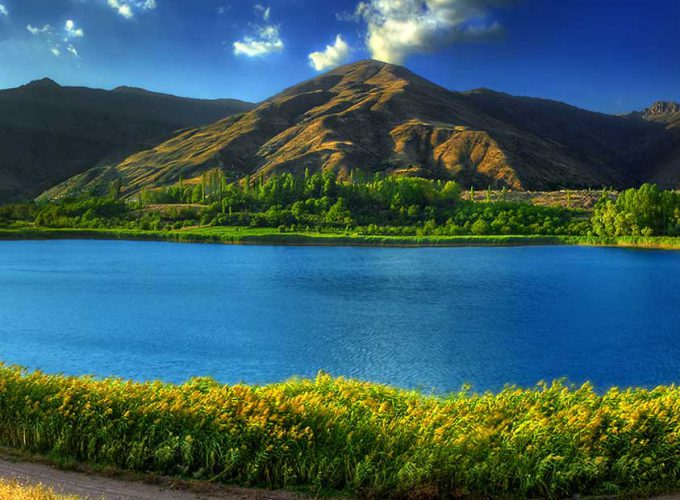
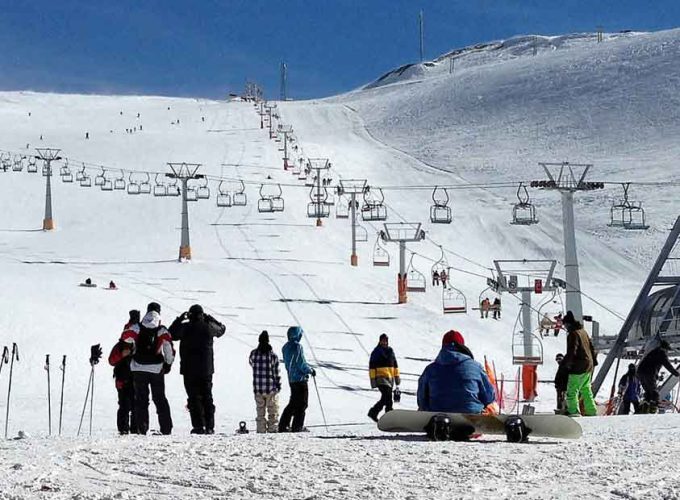
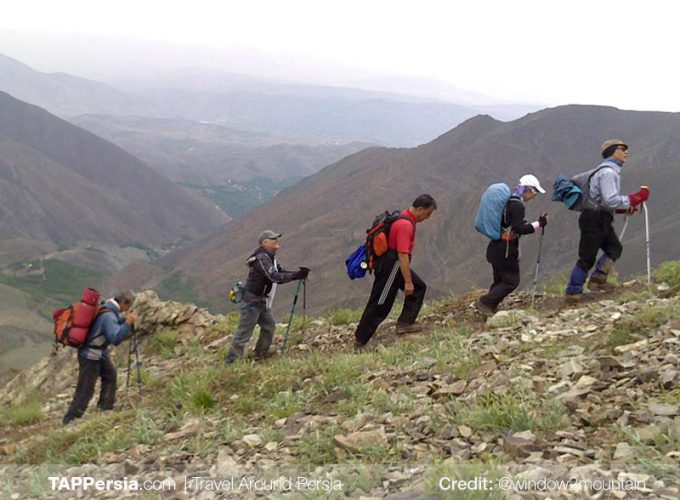
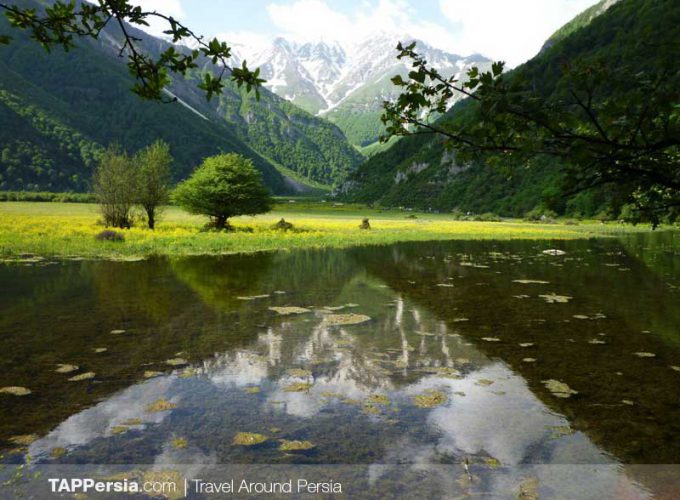
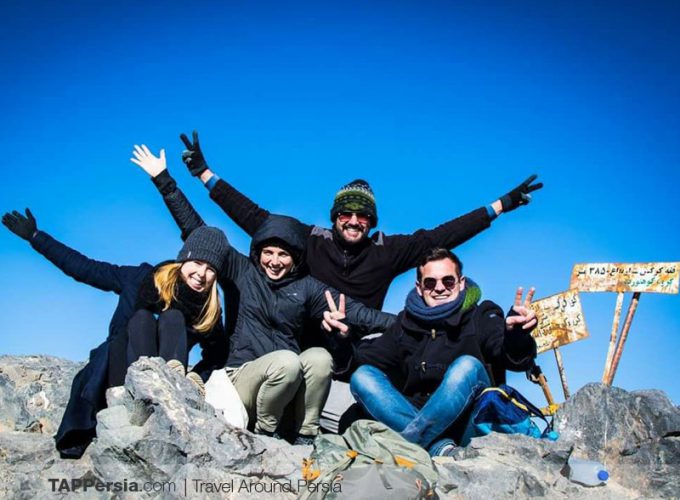


What languages were spoken in this area at this time?